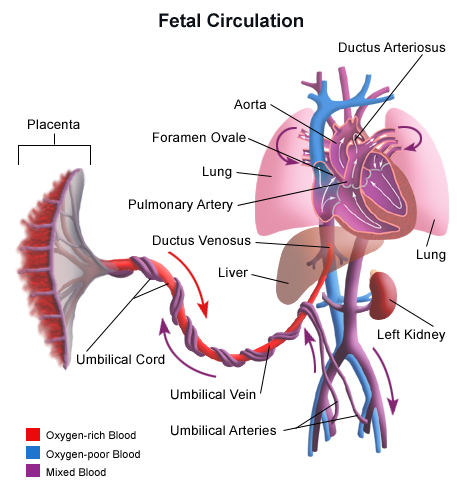Major Functions Of The Placenta And Umbilical Cord
Viruses and bacteria can pass through placenta.
Major functions of the placenta and umbilical cord. The umbilical cord has three functions for the developing fetus. Placentas are a defining characteristic of placental mammals but are also found in. Respiratory excretory nutritive endocrine barrier function immunological function. To fight against internal infection.
In the process of placental development an egg is fertilized by a sperm cell a two cell structured is formed called zygote. Aerials to pass into the social blood. To avoid the possibility of damaging the placenta umbilical cord or the baby the umbilical cord can grow up to 60cm long. Blood from the mother goes through the placenta then into the umbilical cord attached before reaching the baby.
And to produce hormones which support pregnancy. The main function of the umbilical cord in a mammalian fetus is to carry nourishment and oxygen to the fetus from the mother s placenta and to carry waste products from the fetus to the placenta. Placenta functions as an efficient barrier defensive wall and allows useful. Blood from the umbilical cord can also be used to.
A placenta is an organ attached to the uterine wall with access to the mother s blood supply. The umbilical cord is a connection between the mother and the developing fetus. Some of the main functions that the placenta performs include. The umbilical cord is a tube like structure that connects a fetus to the mother s placenta.
It supplies oxygen it delivers nutrients and it helps to withdraw blood rich in carbon dioxide and depleted in nutrients. The main function of the placenta is to supply the baby with adequate nutrition. The placenta tends to grow in areas of good blood supply and nutrition and atrophies in areas with poor blood supply and poor nutrition. Placental trophotropism is the reason why a low lying placenta noted in an early pregnancy scan may resolve on a later scan.
Therefore pregnant women should avoid cigarette and drugs. Harmful substances such as nicotine from cigarette and addictive drugs such as heroin can pass through placenta. The placenta moves at approximately 1 mm per week. The placenta is a temporary organ that connects the developing fetus via the umbilical cord to the uterine wall to allow nutrient uptake thermo regulation waste elimination and gas exchange via the mother s blood supply.
A flattened circular organ in the uterus of pregnant mammals is called placenta and the main placenta functions are to nourish and maintain the fetus through the umbilical cord. Three blood vessels make up the umbilical cord.

